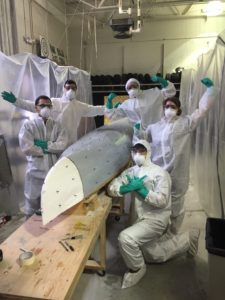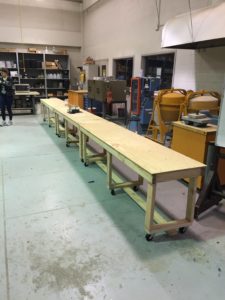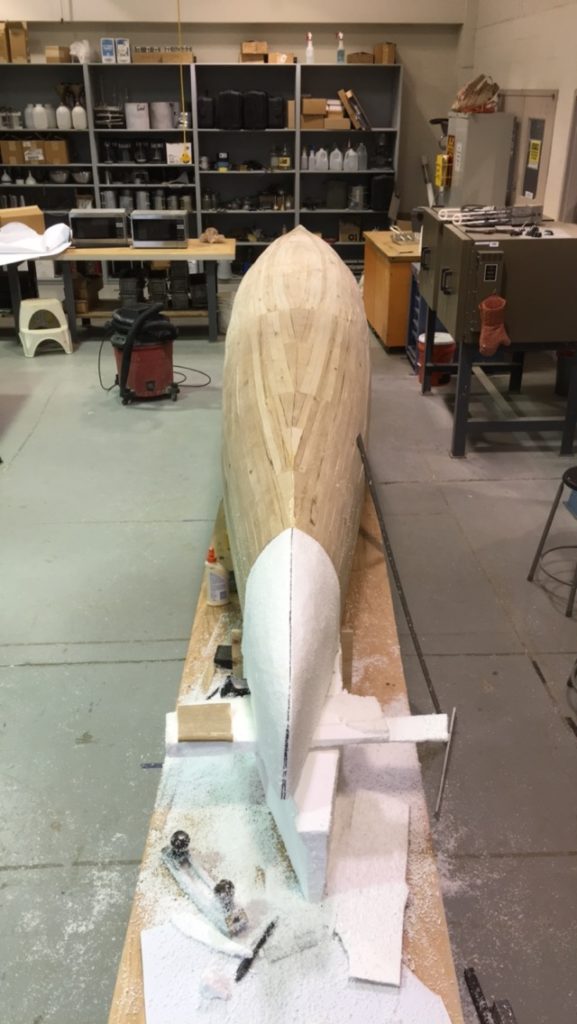The competition this year was held on April 10, 2016 at Cook’s Pond in Denville, NJ. Unfortunately this year, teams in the Metropolitan regional competition were not able to race. This was determined by the town of Denville due to the cold water conditions. However, the team was still able to go to competition and take part in the swamp test and the presentation portion. TCNJaws made it through transportation, which has been rather difficult in the past. Below is the suspension system that the team created to cradle the canoe and absorb any possible shock that might occur during transportation.
During competition, TCNJaws passed the swamp test. This test requires the team to place their canoe in the pond, fill the inside with water, and completely submerge the hull. If the hull does not float back up and break the surface of the water the team cannot participate in the race portion of the competition. As you can tell we were all very excited that we passed the swamp test.
The team placed fourth overall at competition and is excited to pass down their knowledge and experience onto next year’s team.










